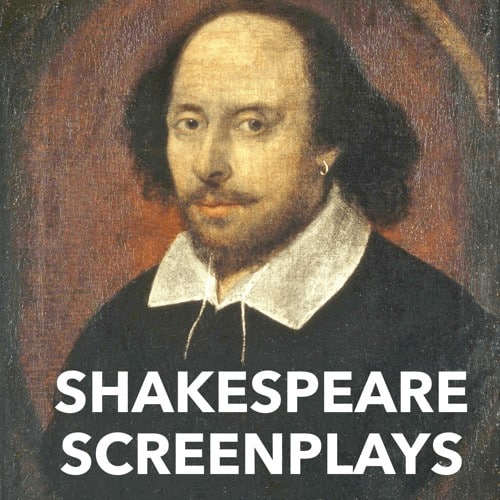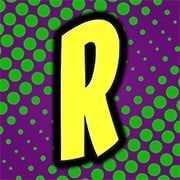Why try to slog through Shakespeare with this:

…when you can work smarter and faster with this:

Now you can, with
Shakespeare Screenplays

Shakespeare Screenplays gives you all of Shakespeare’s classic plays custom formatted in familiar screenplay format, in a PDF script – perfect for use with Rehearsal® Pro.
No more trying to figure out words, no more odd fonts, no more strange page layouts that make working with Shakespeare that much harder.
Work with the clean, beautifully simple, familiar screenplay layout that professional actors use every time they audition or work.
Shakespeare Screenplays feature:
- Industry standard PDF – no more printing web pages
Courier 12 font– simple and easy to read- Single line spacing – the TV drama spacing standard
- Line numbers intact – find where you are in the script easily
- Aligned role names – find your lines in a snap
- BBC/USA standard line blocks – familiar and easy to read
- (MORE)…(cont.) notations – perfect lines crossing page boundaries
- Page numbers upper right – right where you expect them
- Print or electronic use – use on paper or on screen
- Affordable – $4.99 each, $149 for all 37 scripts (plus bonuses) (a 20% discount!)

And best of all, all of these scripts work perfectly with the industry standard app for learning lines and rehearsing scenes, Rehearsal® Pro.
You can get Rehearsal® Pro in the iTunes App Store directly on your iPhone, iPad or iPod Touch, or by clicking here.
Purchase individual scripts (or the entire collection) here:
A great deal of thought goes into the hand-crafted preparation of each and every of the Shakespeare Screenplays, from knowing the needs of today’s TV- and film-centric actor to the venerable script itself. Every time we produce a new Shakespeare Screenplay, we have the actor and the production in mind, and we pay homage to Shakespeare with every issue.
We start with the text version of an accurate script, checking each raw script for authenticity and precise language and directions.
The text is then “poured” into Microsoft Word, where all of the editing and the final creation of the PDF file takes place. The Word document itself is formatted to match today’s industry standards for script margins, gutters, headers and footers.
One line at a time, the script’s character names are then hand-formatted to be centered and capitalized. Minor characters names, as was Shakespeare’s custom, are originally in sentence-case format, and are then individually capitalized to match modern TV and film script standards.
Each dialogue block is then crafted to match the narrower columns of standard screenplay scripts, leaving plenty of room for notes, yet retaining the initial letter capitalization of each of Shakespeare’s penned lines. Prose is re-flowed in block style, but rhyming lines are kept in easy-to-read poetic format.
The stage direction is left justified, again, to USA/BBC standards, and each act and scene are separated by page breaks, leaving more space for notes and more breathing room for the actor to take in the lines and action.
The lines themselves are given their space, avoiding breakage across pages. In cases where the lines are longer or are lengthy monologues or soliloquies, another script standard is employed, the (MORE) and (cont.) indicators. This is used to give a visual warning to the actor that their line continues on the next page.
Once the script has been edited for format, it is then proofread and converted to a PDF file for placement in this repository.
As you can see, each Shakespeare Screenplay is treated with the utmost respect for the author, and the utmost care for the cast and crew.
Shakespeare’s choice of words not only reflect the presentation and style of his works, but also the common vernacular of the day. This is a woefully incomplete list of some of the words we come across in his chosen language and what they mean. If you come across a word that you’d like to have defined here, or you’d like to contribute to the glossary, send your word, where it appears in Shakespeare’s work, and, if you’re offering a definition, a brief definition of the word to [email protected]. And thanks in advance for your contribution!
Alarums (uh-LAIR-umz): a warning, an alarm, or a call to arms.
anon (uh-NON): at once, immediately.
avaunt (uh-vaunt): away.
barm (barm): The foam atop a glass of alcoholic brew.
benison (BEH-nih-sun): a blessing or benediction.
caitiff (KAY-tiff): a despicable, cowardly person.
chough (chuff): a red-billed crow.
Exeunt (ex-ay-OONT): An exit from the stage made by more than one character.
Hautboys (HAWT-boyz): Used often in his stage directions, it is from the French haut-bois, or oboe.
jack-an-apes | jackanapes (JACK-an-ayps): Literally, a jackass of a person; an impudent jerk.
lanthorn (LANT-horn): An alternate spelling and pronunciation of lantern.
linsey-woolsey (LIN-zee WUHL-zee): A common cloth used to make clothing, a blend of wool and either cotton or linen.
neaf (neef): A hand or fist.
provender (PRAH-vin-der): Human food or animal feed.
quire (kwire): A stack of paper, 20 or so, and sometimes 1/20th of a ream (500 sheets).
quern (kwern): A device for milling and grinding grain.
sennet (SEN-nit): The signaling with a brass instrument the entrances and exits of characters.
videlicet (vih-DELL-uh-sit): A synonym for the phrase “to wit” or “that is” or the word “namely.” Used to signal the reader that an example is to follow.
welkin (WELL-kin): The heavens above, the sky, where angels dwell.
There are many great, free resources around the web that are dedicated to the works of William Shakespeare. Although by no means an exhaustive list, these are the ones we’ve found most helpful in the preparation of these Shakespeare Screenplays.
- No Sweat Shakespeare
- Wikipedia: William Shakespeare
- Open Source Shakespeare
- MIT: Complete Works of William Shakespeare
- shakespeare online
- Absolute Shakespeare
- The Shakespeare Center – Los Angeles
- Terry Gray’s Palomar Shakespeare and the Internet
If you come across a site you think we should know about, send a link to the site to [email protected]. And thanks in advance for your contribution!
